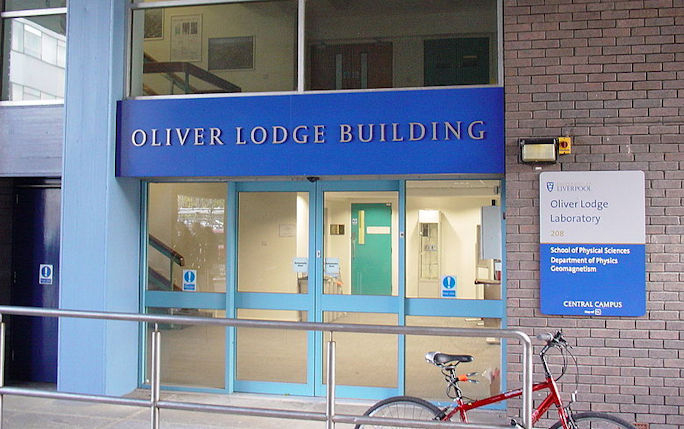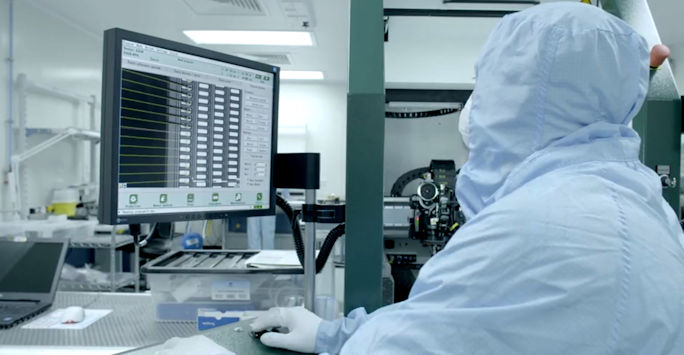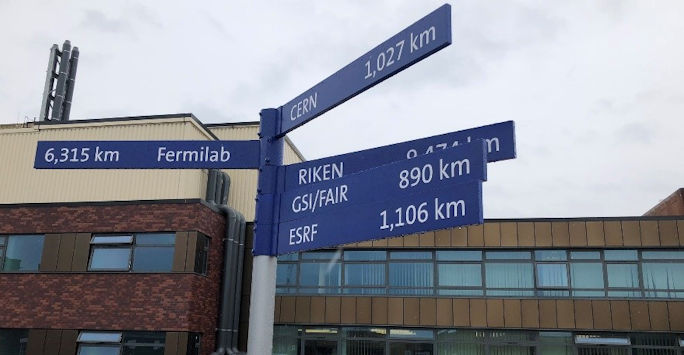Physics Department Celebrates 50 Years of Oliver Lodge Building

The Department of Physics at the University of Liverpool marked the 50th anniversary of the Oliver Lodge Building with a celebration event that looked back over some of the many memories created by its staff and students over the past five decades.
The Oliver Lodge Building was officially opened on 15th May 1969 by Princess Alexandra, The Honourable Lady Ogilvy, and has remained the home of physics at the University of Liverpool ever since. The building takes its name from Sir Oliver Lodge, who in June 1881 was elected as the first Professor of Physics and Mathematics at the newly founded University College Liverpool, and became only the second Professor in any subject at the University. Lodge went on to become a world-renowned physicist for his developments in the fields of radio and electromagnetism, and was knighted by King Edward VII in 1902.

Photograph of the Department’s clean room where detectors are designed, assembled and tested.
Since it opened in the spring of 1969, the Oliver Lodge Building has seen thousands of staff and students pass through its doors to study physics at undergraduate, masters and PhD level, and conduct cutting-edge research across wide range of fields including particle, nuclear and condensed matter physics. A number of personal memories of the building and department were shared by past and present members of staff and students.
The event started in the central teaching hub with the inaugural lecture of Professor Vin Dhanak on “Photoemission: Insights into the materials world”, before former staff member Dr Mike Houlden gave a fascinating talk about “Memories of the early days of the Oliver Lodge”. Dr Houlden said: “Physics research was done very differently in these early years, but the spirit, the fascination of our staff and students for the unknown has remained a driving force behind all research in our department.”
Many major achievements have taken places within the walls of the building over the last fifty years. Researchers in the Department have developed new applications for spectroscopy techniques, pioneered the use of new computing systems, and worked on the collaborative ATLAS experiment at CERN that confirmed the existence of the Higgs boson. The building has also been home to numerous important researchers over the last five decades including a Nobel Laureate. Professor Martin Perl, who was awarded the Nobel Prize in Physics for the discovery of the tau lepton, was appointed as a Visiting Professor at the University in 2011 and worked in the building up until his death in 2014.
In recent years, the Department has developed a world leading reputation as a pioneer in the design and optimisation of particle accelerator technologies. It plays a key role in major national and international collaborations and is based at the Cockcroft Institute at Daresbury in the UK. These collaborations are developing a deeper understanding of fundamental physics that governs our Universe, and developing industrial applications for accelerators in the medical, security and environmental sectors.
Other research in the Department is aiming to address global challenges. The Stephenson Institute for Renewable Energy is developing new materials and technologies to transform the future energy and accelerate the transition to a low-carbon society, and the EU-funded Optimization of Medical Accelerator (OMA) project is helping to provide advanced therapy treatments for cancer patients.

New signpost on rooftop, highlighting the department’s many international links.
Speaking at the celebration event, Professor Carsten Welsch, Head of Physics at the University of Liverpool, said: “Five decades on from its opening, the Oliver Lodge Building remains the headquarters of our world-class research and teaching in the Department of Physics. We’re rightly very proud of the history of our building and Department, and hope that the next fifty years of physics here in Liverpool will be even more successful as we train the next generation of physicists and tackle some of the most critical challenges of the 21st century through our innovative research.”
The event concluded with a BBQ for all staff and students in the sunshine on the newly re-opened rooftop terrace.